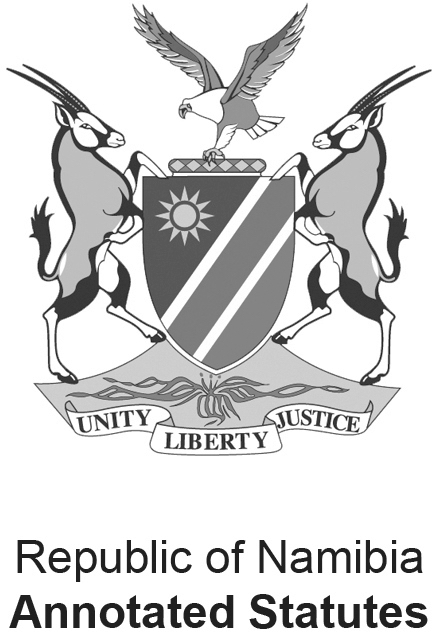
Marine Resources Act, 2001
Vessel Monitoring Regulations, 2005
Government Notice 65 of 2005
- Published in Government Gazette 3446 on 14 June 2005
- Commenced on 14 June 2005
- [This is the version of this document at 15 November 2017.]
- [Note: The version of this legislation as at 15 November 2017 was revised and consolidated by the Legal Assistance Centre and the Government of the Republic of Namibia. All subsequent amendments have been researched and applied by Laws.Africa for NamibLII.]
Government Notice 2 of 2014 (GG 5391) came into force on date of publication: 15 January 2014
[GN 2/2014 amends the regulations throughout to substitute “Fisheries Monitoring Centre” for “vessel monitoring operations centre”.]
1. Definitions
In these regulations unless the context indicates otherwise, any expression to which a meaning has been assigned in the Marine Resources Act, 2000 (Act No. 27 of 2000), (hereinafter referred to as “the Act”) bears that meaning and unless the context indicates otherwise-“ALC” means an automatic location communicator contemplated in regulation 3;“Fisheries Monitoring Centre” means the fisheries monitoring centre established in terms of regulation 5[The definition of “Fisheries Monitoring Centre” is inserted by GN 2/2014. There should be a semicolon at the end.]“tampering” includes any modification, change or any other action that may cause the ALC to function otherwise than in accordance with any requirements determined in terms of these regulations;“operates” means to catch fish, to attempt to catch fish or to be at sea outside a port;[The definition of “vessel monitoring operations centre” is deleted by GN 2/2014.]2. Vessel must have ALC installed
3. Requirements and approval for an ALC
4. Duty of master under certain circumstances
5. Fisheries Monitoring Centre
6. Confidentiality of information collected
7. Laws regulating the possession and operation of radio apparatus
History of this document
15 November 2017 this version
Consolidation
14 June 2005
Commenced